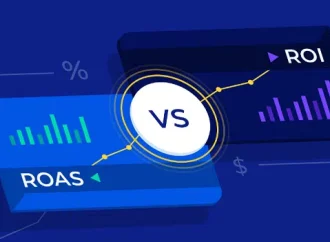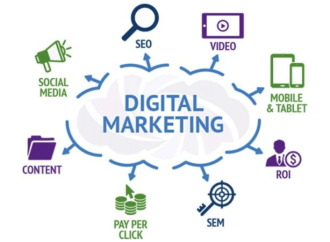Welcome to the world of e-commerce, where online shopping has become a way of life for millions of people. With the rise of technology and changing consumer behavior, the e-commerce industry is evolving at an unprecedented pace. From AI-powered virtual assistants to mobile-friendly checkout processes, businesses need to adapt quickly if they want to stay
Welcome to the world of e-commerce, where online shopping has become a way of life for millions of people. With the rise of technology and changing consumer behavior, the e-commerce industry is evolving at an unprecedented pace. From AI-powered virtual assistants to mobile-friendly checkout processes, businesses need to adapt quickly if they want to stay relevant in this competitive landscape. In this blog post, we’ll explore some key trends that are shaping the future of e-commerce and share tips on how you can stay ahead of the game. So buckle up and get ready for a thrilling ride into the exciting world of e-commerce!
What is e-commerce?
E-commerce, also known as electronic commerce, is the buying and selling of goods and services online. It covers a wide range of activities, from online shopping and auction sites to business-to-business (B2B) exchanges. E-commerce has revolutionized the way businesses operate and has had a profound impact on the economy.
The term “e-commerce” was coined in the early 1990s, when the first online stores appeared. Since then, e-commerce has grown rapidly and now accounts for a significant proportion of all retail sales worldwide. In 2019, global e-commerce sales reached $3.53 trillion, an increase of 14.9% over 2018.1
There are several drivers of e-commerce growth, including:
The increasing popularity of online shopping: The ease and convenience of buying goods and services online has made it the preferred choice for many consumers.
The expansion of internet access: More people around the world are getting connected to the internet, which provides them with greater access to e-commerce platforms.
The growth of mobile commerce: The increasing use of smartphones and other mobile devices has made it possible for people to shop online while on the go.
The rise of social media: Social media platforms like Facebook and Instagram have become major channels for promoting and selling products online.
The increasing availability of payment options: A wider range of payment options makes it easier for people to buy goods and services online.
The history of e-commerce
The history of e-commerce is a long and varied one, full of twists and turns. It began in the early days of the internet, when a few pioneering companies saw the potential for selling goods and services online. This was the first wave of e-commerce, and it was largely driven by businesses seeking to reach a larger audience beyond their brick-and-mortar locations.
The second wave of e-commerce was spurred by the widespread adoption of broadband internet access in the early 2000s. This allowed for much more robust online shopping experiences, as well as the development of new technologies like streaming video and audio. This boom in e-commerce activity led to the rise of major players like Amazon and eBay, who are still dominant forces in the industry today.
The third wave of e-commerce is being driven by mobile devices like smartphones and tablets. Consumers are increasingly using these devices to shop online, and businesses are scrambling to keep up with this trend. We’re also seeing the rise of new business models like subscription commerce and on-demand services.
It’s clear that e-commerce is evolving rapidly, and businesses need to stay ahead of the curve to stay competitive. The future of e-commerce looks bright, but it’s also full of challenges and opportunities.
The future of e-commerce
E-commerce is evolving rapidly, and businesses need to stay ahead of the curve to remain competitive. Here are four predictions for the future of e-commerce:
1. Personalization will become even more important.
2. Social media will play an even bigger role in e-commerce.
3. Mobile commerce will continue to grow.
4. E-commerce will become more global.
E-commerce trends to watch out for
In a rapidly evolving industry like e-commerce, it’s important to stay ahead of the trends. Here are some e-commerce trends to watch out for:
1. The shift to mobile: More and more consumers are using their smartphones and tablets to shop online. This means that businesses need to optimize their websites for mobile devices.
2. The rise of social media: Social media is playing an increasingly important role in e-commerce. Businesses need to make sure they’re present on the major platforms and that they’re active in engaging with their customers.
3. The growth of omnichannel: Consumers today expect a seamless experience across all channels, whether it’s in-store, online, or through a mobile app. Businesses need to be able to meet these expectations by offering an omnichannel strategy.
4. The importance of personalization: In a competitive market, businesses need to find ways to stand out from the crowd. One way to do this is by personalizing the customer experience. This could involve tailoring recommendations and offers based on customer data, or providing a more personalized level of customer service.
5. The power of data: Data is becoming increasingly important in e-commerce. Businesses need to make sure they’re collecting and analyzing data so they can make informed decisions about their strategies and operations
How to stay ahead of the game in e-commerce
In a rapidly evolving industry like e-commerce, it’s important to stay ahead of the game. Here are some tips on how to do just that:
1. Keep up with the latest trends.
Make sure you’re always up-to-date on the latest e-commerce trends. This way, you’ll know what changes are happening in the industry and can adjust your business accordingly.
2. Use data to your advantage.
Data is key in e-commerce. Use data analytics to gain insights into your customers’behavior and preferences. This way, you can better understand them and cater to their needs.
3. Be agile and adaptable.
In an ever-changing industry like e-commerce, being agile is crucial. Be prepared to change and adapt as needed. This way, you can always be one step ahead of your competition.
Conclusion
As the e-commerce industry continues to evolve, it is clear that those who stay ahead of the game will be best positioned to benefit from its growth. By leveraging data and analytics, optimizing your customer experience, embracing digital transformation and innovating at every opportunity, you can ensure that you remain competitive in this rapidly evolving sector. With these tips in mind, you’ll be ready to take on the future of e-commerce with confidence!





















Leave a Comment
Your email address will not be published. Required fields are marked with *